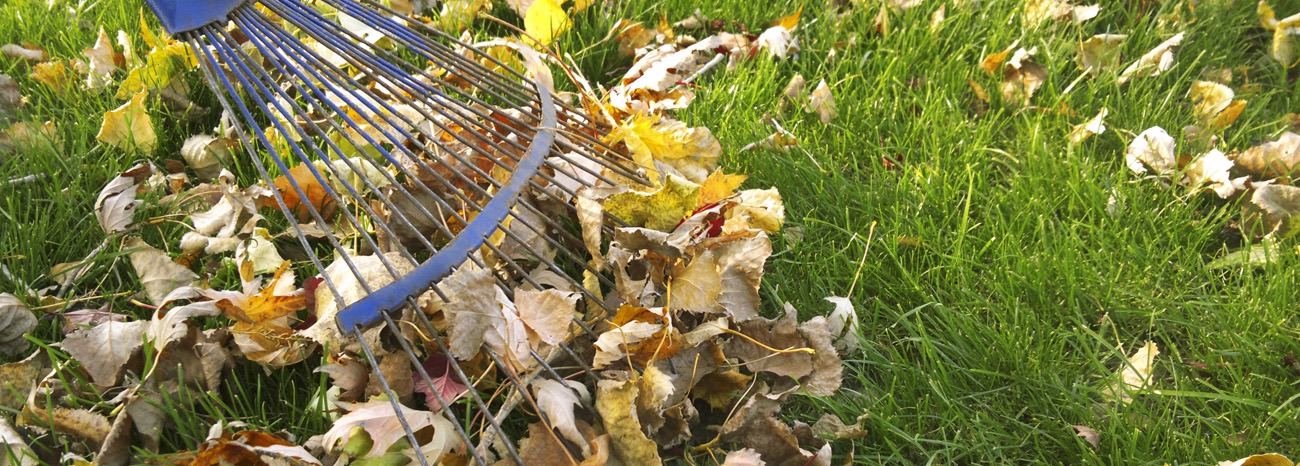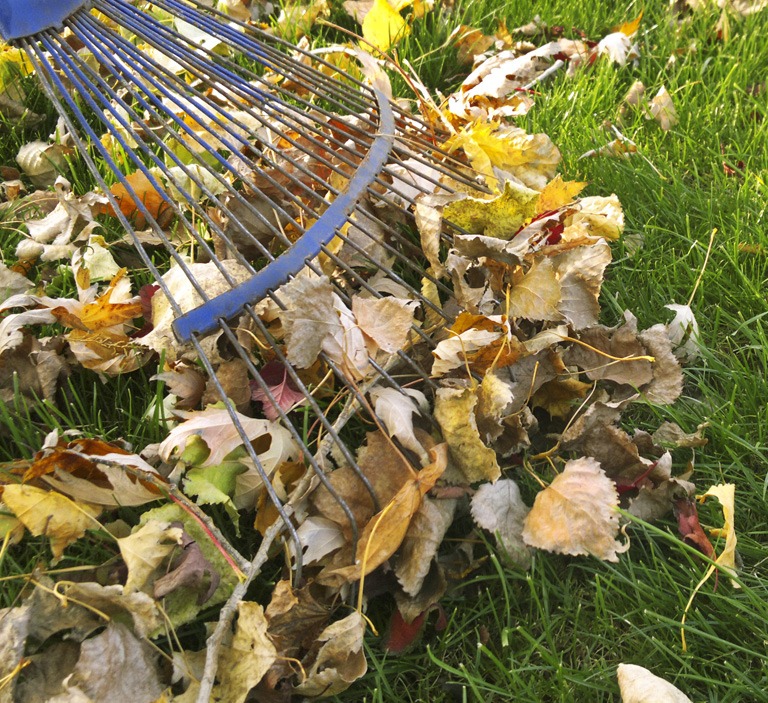Want a beautiful lawn in the spring? It starts with fall lawn care.
Want to know how you can expect a healthy, green lawn to emerge in the spring after a cold and snowy winter? Spring success starts in the fall.
Fall is the perfect time of year to lay the groundwork for a beautiful lawn in the spring. Two things are on your side: weather and timing. Fall brings cooler air and replenishing rain and enough sunshine to nourish the roots of your grass just before your lawn goes dormant for the winter.
It’s a great time of year to be outside, so spending a little more time in your yard taking care of these fall lawn care steps shouldn’t be too hard to do.
Remove or Mulch Fallen Leaves
You might have heard that it’s best to let any fallen leaves stay in place, covering your lawn because the layer of leaves provides protection from the elements. In reality, this is bad for your lawn. A carpet of fallen leaves will prevent sunlight from reaching your grass. As the leaves get wet from dew and rain, that trapped moisture is the perfect setting for lawn fungi.
The best thing to do is rake the leaves. Using a leaf blower is fine but raking removes the leaves and also helps invigorate your lawn. You could also mulch the leaves with your lawn mower, as long as they are mulched into small pieces.
It’s Still Mowing Season
Your lawn will continue to grow until the first hard frost of the season, so the grass will still need to be cut. Make sure not to cut too short or allow the grass to grow too high. Cutting it short hurts the root system’s chances of surviving the winter. Cutting your grass to a height of 2-½” to 3” is just right.
If the grass is any higher it will tend to mat and you’ll be up against the same trapped moisture situation as if you allowed a cover of fallen leaves.
Give Your Lawn Enough Water
Watering your lawn in the summer helps it stay ahead of the brutal heat and excessive evaporation. Even though these conditions let up in the fall, your lawn’s roots will still need a water supply to stay hydrated throughout the winter.
Making sure your lawn is receiving at least an inch of water each week. Use a rain gauge to help you keep track. Water your lawn in the morning using a hose, sprinklers or an irrigation system up until the first hard frost.
Your Lawn Needs Room to Breathe – Aerate
Avoid bare spots and brown patches in the spring by aerating your lawn in the fall. Your lawn played host to friends, family and pets all summer long, likely leading to soil compaction. Aerating in the fall removes soil plugs and prepares your lawn for the next step in fall lawn care: fertilization.
Stock Up on Nutrients – Fertilize Your Lawn
Squirrels stock up on nuts so they’ll have nutrition over the winter, do the same for your lawn. Fertilizing your lawn helps replenish any nutrients the grass lost throughout the summer and also prepares it with the energy it needs to make it through the cold winter months.
Prevent Spring Weeds – Seed in the Fall
Fall is an ideal time to overseed areas of your lawn that might need extra care, like known bare patches and brown spots. Doing this in the fall helps the roots to take hold well before the spring. Starting to grow a thicker lawn now will lead to less weeds in the spring.
Check for Pests
You don’t have to wait for the warmer months for pest control. Like all of the other tips we’ve covered, fall is a good time to take care of any pests you notice in your lawn, like grubs.
Making the effort now will pay off in the spring
If you dedicate even just an hour or two a week to these fall lawn care activities, you’ll be on your way to welcoming a gorgeous and vibrant lawn in the spring. But don’t feel guilty if you’d rather not spend your fall days working in your lawn.
There’s a reason people say “You can always spot a Moyer lawn.” Our lawn care experts are here to help. Learn more about our lawn care services that fit every budget and need.


